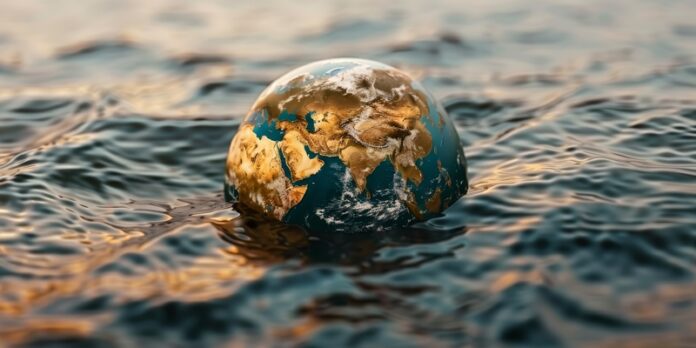A 2018 article appearing in the open-access journal Nature Communications noted that from 1925 to 2016, the latter date marking the end of an El Niño event, mean ocean temperatures have increased with a 54% rise in marine heatwaves. Several more El Niños since then have contributed to the further warming of the ocean from the tropics to the poles. The article cited “anthropogenic greenhouse gas forcing” as the main cause.
How do we know that global ocean temperatures are on the rise? For much of the 20th century data gathering involved dipping thermometers into ocean water. But since the 1970s it has been Earth-observation satellites providing us with a comprehensive picture of the state of the world’s oceans.
Ocean temperatures are rising and marine heatwaves have increased in number and duration. Marine heatwaves are of particular consequence to countries bordering the Indian Ocean which has experienced the biggest temperature increases. In 2023, heat waves over the Indian Ocean caused massive coral bleaching and affected land temperatures in India, Indonesia and Malaysia. These countries all saw spikes in deaths from heatstroke.
An IPCC 2021 report noted that Asian and Sub-Saharan African countries and Australia are at greater risk from future marine heatwaves than other parts of the planet. Marine heatwave days it noted were forecasted to increase by a factor of 16 by 2100. To the east of the Indian Ocean, the Western and Southwestern Pacific also have witnessed increases in terrestrial and marine heatwaves that have been associated with the cyclical El Niño events.
The causes for ocean warming and marine heatwave increases in both the Indian Ocean and the neighbouring Pacific include:
- atmospheric global warming linked to greenhouse gas emissions.
- atmospheric dynamics that have pushed warmer water horizontally across these bodies of water to pile up in coastal areas.
- cyclical large-scale weather phenomena between El Niño and La Niña events.
- vertical processes in the ocean conveyor belt distributing the heat throughout the water column and accelerating heatwave frequency and duration.
The warming of the world’s oceans is changing their biology. Most marine animals and plants have adapted to thrive within fairly narrow temperature ranges. Fish populations and coral reefs are providing evidence of just how impactful marine heatwaves and rising ocean temperatures have been. The Indian Ocean fishery is collapsing as species once close to fishing communities seek cooler water. The warmer waters are also impacting species reproduction and the size of fish being caught. They are getting smaller.
The consequences to corals have been particularly noticeable with frequent reef bleaching events in shallower areas and along the edges of the continent shelf. Even kelp and seagrass growth is being affected by the warmer ocean water. Considering the latter two are significant natural carbon sinks, it means we are losing one of our more effective weapons to mitigate climate change.
A warming ocean is also an expanding one. The Indian and Western Pacific Oceans are experiencing sea level rise as a consequence. Unevenly distributed it means some island nations are seeing horizontal water movement plus ocean expansion causing a loss of land while others further to the east are less impacted for the moment.
An increase in marine heatwave frequency in countries bordering the Indian Ocean will only add to the current challenges of growing health risks from heat and the spread of vector-borne tropical diseases, as well as food and freshwater insecurity.
What is needed is a combination of mitigation and adaptation strategies. Mitigation will require a collective response involving reducing global greenhouse gas emissions. This cannot be confined to only the countries feeling the largest impact of marine heat waves.
Adaptation will require short and long-term planning that includes introducing new fish, coral and other marine species adapted to warmer conditions, as well as changes to urban and rural infrastructure to reduce the risk to human populations from rising ocean temperatures and more severe marine heat waves.
A snapshot weather report from Delhi, India illustrates just how serious these heat waves have become. Reported high temperatures of 50 Celsius (122 Fahrenheit) have been reported regularly throughout May and June, and for 24 days in May, daily highs hit 40 Celsius (104 Fahrenheit) or higher. Temperatures were so hot that the roads melted. This is the new abnormal caused by the Indian Ocean running a fever.









